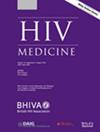Functional and structural neuroretinal disorders in HIV Controllers. Prospective cohort study
Abstract
Objective
To estimate the prevalence and cumulative incidence of neuro-retinal-disorders (NRD) in HIV-controllers.
Design
Prospective, single-centre, cohort study of people living with HIV (PLWH): elite-controllers, long-term-non-progressors and early diagnosed.
Methods
The study compared “HIV-controllers” (including elite-controllers and long-term-non-progressors), who were not on antiretroviral therapy (ART), and “HIV-treatment” (HIV-infected subjects with a recent diagnosis and on ART). A matched cohort of “non-HIV subjects” was created. NRD was defined as at least one altered (not normal) ophthalmological parameter (functional or structural). Functional (visual acuity, contrast sensitivity, chromatic vision, visual field) and structural parameters (ganglion cells, macular nerve fibre layer, peripapillary nerve fibre layers, vascular calibre) as well as quality of life (Medical Outcomes Study-HIV Short Form-30) were assessed.
Results
Between March 2012 and November 2015, the study included all HIV-controllers (16 elite-controllers, 1 long-term-non-progressor), 11 HIV-treatment and 16 non-HIV. Prevalence of NRD at baseline was 88.2% (15/17, 95% CI: 65.7%–96.7%), 90.9% (10/11, 95% CI: 62.3%–98.4%) and 56.3% (9/16, 95% CI: 33.2%–76.9%), respectively. Cumulative incidence at 3 years was 50% (1/2), 100% (1/1) and 33.3% (2/6), respectively. None of the participants manifested ocular clinical symptoms. Three years later, prevalence of NRD was 92.3% (12/13, 95% CI: 66.7%–98.6%), 75% (6/8, 95% CI: 40.9%–92.9%) and 50.0% (7/14, 95% CI: 26.8%–73.2%), respectively. Contrast sensitivity and structural parameters were globally the most affected among PLWH. Quality of life (total score) [median (interquartile range)] at baseline and 3 years was 82 (71–89) and 74 (63.5–79.25) in HIV-controllers and 80 (73–88) and 88 (83–92) in HIV-treatment.
Conclusions
HIV-controllers and those individuals on ART presented a higher percentage of NRD than non-HIV. Our results suggest that NRD could be a biomarker of ocular aging among PLWH.

 求助内容:
求助内容: 应助结果提醒方式:
应助结果提醒方式:


